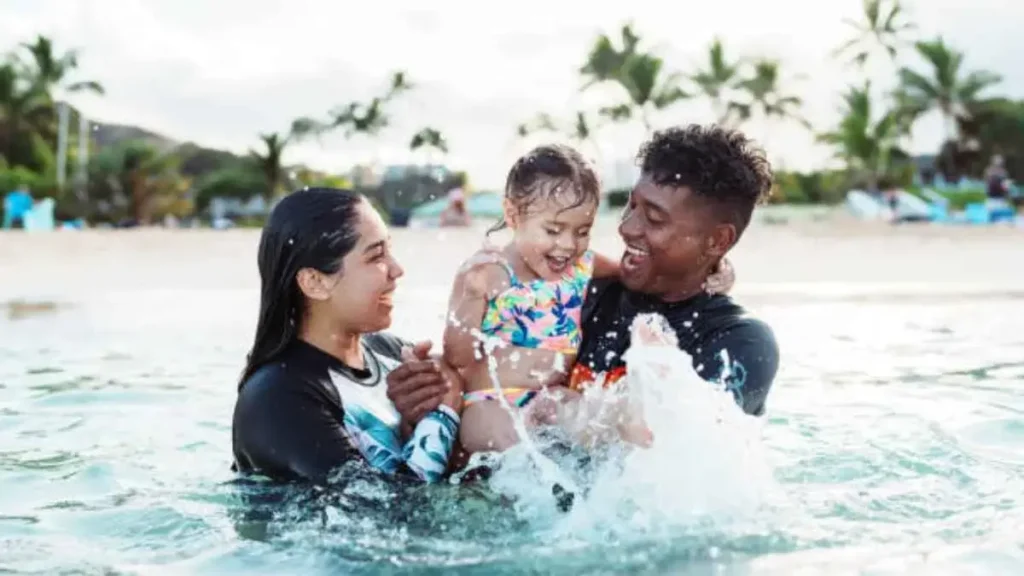GENERAL
Stay Afloat: Top Tips for Safety in Public Swimming Areas

As the summer sun beckons, public swimming pools and water parks become vibrant hotspots for relaxation and fun. However, amidst the excitement of splashes and sunbathing, safety must remain a priority. Understanding how to stay safe in these environments can significantly reduce the risk of accidents and ensure a more enjoyable experience for everyone. Here are some essential tips for staying safe in public swimming areas.
Table of Contents
1. Know the Pool Rules
Every public pool has its own set of rules designed to maintain safety and order. These can include guidelines about diving, running on the pool deck, or using certain pool features. Before you dive in, take a moment to read the posted rules and any instructions from lifeguards. Familiarizing yourself with the rules helps you understand acceptable behavior and enhances your overall safety.
2. Supervise Children at All Times
When taking children to a public pool, vigilant supervision is essential. Drowning can happen rapidly and quietly, sometimes in mere seconds. Keep children within arm’s reach, particularly if they’re not confident swimmers. Implement a buddy system so kids can watch out for one another while they swim.
Moreover, enrolling them in swimming lessons can help boost their confidence and enhance their skills in the water. If an accident does occur, consulting with a child injury lawyer may be important to understand your rights and options.
3. Assess Your Swimming Ability
Be honest about your swimming skills and comfort level in the water. If you’re not a confident swimmer, stay in shallow areas and avoid deep ends. Many public pools have designated sections for different skill levels; use them to your advantage. If you or your children need assistance, don’t hesitate to ask a lifeguard or staff member for help. They are trained to handle various situations and can provide guidance.
4. Follow Lifeguard Instructions
Lifeguards are present for a reason: to ensure safety. Always pay attention to their instructions and signals. If they whistle or shout warnings, it’s crucial to comply immediately. Lifeguards are trained to spot potential hazards and emergencies, and following their directions can prevent accidents and keep you safe.

5. Stay Hydrated and Apply Sunscreen
Spending long hours under the sun can lead to dehydration and sunburn, which can spoil your swimming experience. Drink plenty of water before and during your time at the pool to stay hydrated. Additionally, apply a broad-spectrum sunscreen with at least SPF 30. Reapply every two hours or more frequently if you’ve been swimming. Remember to cover often-forgotten areas like the back of your ears, the tops of your feet, and your scalp if you’re bald or have short hair.
6. Watch for Hazards
Keep an eye out for potential hazards around the pool area. Wet surfaces can be slippery, so walk, don’t run, and avoid horseplay on the deck. Check for signs of maintenance, such as broken tiles or equipment, and report any hazards to the staff. Additionally, be mindful of other swimmers; crowded areas can lead to accidental collisions or splashes that might startle you or others.
7. Be Cautious with Inflatables and Toys
While pool toys can enhance fun, they can also pose safety risks. Inflatables and large toys can obstruct visibility, making it harder for lifeguards to monitor swimmers. If using toys, ensure they are suitable for the pool and follow the facility’s guidelines regarding their use. Always supervise children playing with inflatables, as they can tip over and lead to accidents.
8. Understand CPR and Basic First Aid
Knowledge is power when it comes to safety. Understanding basic CPR and first aid can be invaluable in emergencies. Many organizations offer classes for free or at low cost. Familiarizing yourself with these skills will enable you to assist in case of an emergency, even if you are not a trained lifeguard.
9. Be Mindful of Weather Conditions
Weather can change rapidly, and storms can pose serious dangers. Keep an eye on the sky and be aware of your surroundings. If lightning or thunder occurs, it’s time to leave the pool immediately. Most facilities will have specific protocols for weather-related evacuations; be sure to follow them.
10. Know Emergency Procedures
Familiarize yourself with the emergency procedures at the pool. Where are the nearest exits? What should you do in case of a medical emergency? Understanding these protocols can save precious time if an incident occurs. Additionally, be aware of the location of first aid stations and how to contact emergency services if needed.
In Conclusion
Public swimming areas are places of joy and relaxation, but safety should never take a back seat. By adhering to pool rules, supervising children, understanding your swimming abilities, and remaining aware of your surroundings, you can enjoy a fun and safe experience. Remember that safety is a shared responsibility—look out for yourself and others to help create a secure environment for everyone. So, grab your sunscreen, stay hydrated, and dive into a safe summer!
-

 GENERAL2 months ago
GENERAL2 months agoUncovering the World of кинокрадко: The Dark Side of Film Piracy
-

 GENERAL2 weeks ago
GENERAL2 weeks agoUnveiling the Art of преводсч: How Translators Bridge Language Barriers
-

 YOGA1 year ago
YOGA1 year ago4 Person Yoga Poses for Beginners
-

 GENERAL2 months ago
GENERAL2 months agoThe Journey of iamnobody89757: From Anonymous User to Internet Sensation


























